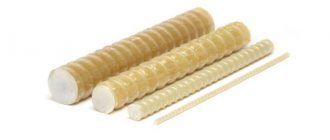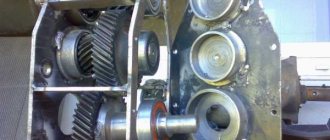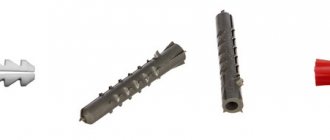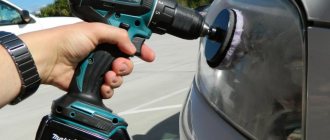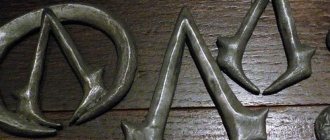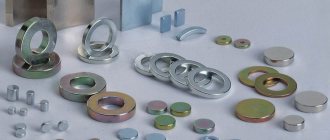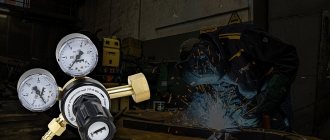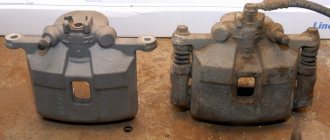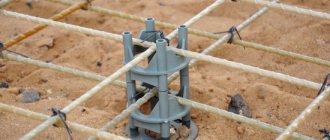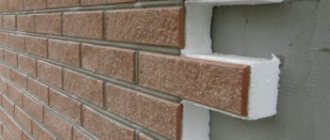No good soldering is complete without the use of flux. This product helps reduce the effect of high temperatures on the metal, reducing surface tension during melting, and also allowing the solder to flow evenly. Additionally, this composition saves the metal from oxidation and also removes already formed oxides. And you can not only buy a suitable one, but also make it yourself. This material will tell you how to make flux.
Varieties
Before making soldering flux with your own hands, you need to determine which ones are needed. For example, low-temperature ones, which begin to melt when heated to 450 °C. And there are high-temperature ones that melt only when heated above 450 °C.
They are also divided by composition:
- Neutral ones are suitable for low-melting solders and copper. These include waxes, stearin, rosin.
- Low-corrosive soldering products are made from rosin, fats, water, alcohols, and weak acids. Rosin helps the active components not cause rapid corrosion of metals.
- Highly corrosive mixtures contain highly active components, sometimes even aggressive ones, for example, fluorides, chlorides, acids, etc. These are usually sold in the form of gels or pastes, since it is important to apply them and use them carefully, because the quality of the solder can be ruined.
Also, soldering products can be divided into groups according to their state of aggregation:
- Solid ones, for example, rosin.
- Liquids such as soldering acid.
- Pastes and gels that have combined compositions.
Not for every type you can make the product yourself at home, but there are recipes for the most common ones. We will consider them further.
The essence of soldering acid
Soldering acid can be used to join surfaces of different materials by introducing molten material between the parts. It's called solder. It has a lower melting point than metal.
The solder should be evenly distributed over the surface of the elements and provide good adhesion to the base. After cooling, it hardens and provides an inextricable connection between the workpieces.
The effectiveness of the presented process depends on the cleanliness of the substrates on which soldering will be applied. Soldering acid is used to prepare the surface of parts. Without it, the process will not proceed satisfactorily, and the required result will not be achieved.
Flux made from citric acid or aspirin
It’s easy to make a flux with your own hands from citric acid or aspirin, because they are quite good antioxidants. This is the simplest soldering composition that you can make yourself.
You just need to take an aspirin tablet or citric acid, dissolve it in water until it completely disappears (no sediment should remain either).
Important!
When soldering, a lot of gas will be released here, so the room should be very well ventilated.
It is recommended not to use lemon juice instead of acid, as it will have almost no effect.
How can you replace rosin at home?
This question arises when you have to turn to improvised means. After all, if there is another suitable flux available, then you can use it if its properties do not contradict the soldering technology. The advice of masters who use such methods may be different. After all, tree resin, which is a direct analogue of rosin, can also be used here. Some people use aspirin, and it is suitable both in tablets and in powder, the main thing is that it can dissolve well. Its concentration must be strong enough to achieve the required properties. It can be dissolved in either alcohol or water.
Alcohol rosin flux
You can also make a homemade flux for soldering from rosin and ethyl alcohol. Here, rosin is first crushed to the finest state, and then dissolved in ethyl alcohol.
The finer you can crush the rosin, the faster it will dissolve. But the mixture will still need to sit for a few hours to fully combine. Although this process can be accelerated if the future flux is heated to 80° in a water bath in glass. Such dishes can then be washed as usual.
Technical or edible fat to help
You can replace rosin with technical or ordinary edible fat. At the same time, the fat does not emit any harmful fumes when heated, except perhaps an unpleasant odor.
Many people find fruit tree resins as a substitute for rosin and use them. This resin melts well and does not spread too much over the surface of the metal.
And, of course, do not forget about the use of acids, which will also help replace rosin and quickly get rid of the layer of oxides on the metal surface. However, you should know that nitric and sulfuric acid are not at all suitable for these purposes.
It will help replace rosin for soldering and the popular BF-6 glue. In general, as you can see, there are not so few analogues of rosin; the main thing is not to overdo it.
Glycerin flux
In the same way as alcohol rosin was made, you can make glycerin flux with your own hands. Here, instead of ethyl alcohol, glycerin will be used, which is added in the same proportions. The rosin here will take longer to dissolve, but the do-it-yourself soldering composition itself will be thicker than alcohol rosin, and therefore easier to work with.
You can even first dissolve rosin in alcohol, and then mix this composition with glycerin, so the quality of the composition will only increase. But this DIY soldering compound will have to be washed after use.
Rosin can also be made with your own hands - from the resin of coniferous trees, melting them down.
What you need to know when using alternative methods
There are no significant differences when using analogues. They, just like rosin, are applied to the work surface or the soldering iron tip is dipped in them.
The only difference can be in preparation. The fat should be transferred to a small container and slightly warmed. You need to make a solution from aspirin. Amber and resins can be used without any preparation.
Instead of rosin, you can use not only acids, but also other available means. They will act as a good flux that protects the surface from oxidation.
All of the above analogues are suitable for soldering, since they have characteristics similar to traditional rosin. However, before use, it is important to study the features of each material.
Based on hydrochloric or phosphoric acid
To make soldering flux with your own hands with hydrochloric acid, you need to proceed as follows:
- Concentrated hydrochloric acid is diluted with water - 1:1.
- Pour the mixture into zinc granules (necessarily in glass).
- Wait for the zinc to dissolve. 1 liter of mixture will require 412 g of zinc, from this you can make your own calculations.
Important!
Since zinc will dissolve with a large release of hydrogen, the room should be very well ventilated, and there should be no fire nearby.
Steel is soldered with this flux, but if you add ammonia to the solution (in the same amount as zinc), then this soldering agent is suitable for many other alloys and metals.
This will be a liquid flux, so it is better to store it in glass and apply it to the soldering area with a brush. The container must be tightly closed so that the homemade product does not spoil.
What are the requirements for soldering fluxes?
Flux for soldering with a soldering iron, be it pine rosin or some other flux, must meet the following requirements:
- Have a low density and a relatively low melting point;
- The flux should be melted with a regular soldering iron;
- Spread moderately over the surface of the metal, that is, not be too fluid, unless we are talking about liquid flux;
- Effectively cope with the dissolution of oxides;
- Have no reaction with both solder and soldering metal.
In addition, the flux should be easily removed from the metal surface. Usually water or special removers are used for removal.
As practice shows, natural pine rosin perfectly meets all of the above requirements. But if rosin is not at hand, replacing it is not so difficult. Some tools can cope with this task quite well, which we will talk about next.
Non-standard methods
If there is no rosin nearby for soldering, you can use material for rubbing bows.
It's better cleaned. All properties are saved. The cost of replacement will be significant. Savvy craftsmen who have solders with flux suggest soaking it in alcohol and waiting until the rosin has completely dissolved. It takes a little time.
They say that such an alcoholic extract can successfully replace rosin. The alcohol component will gradually evaporate. The solid component meets the requirements for fluxes.
When working with old equipment, you can replace rosin with residues in places of old soldering. You need to touch the wire and soldering iron there and make a connection. This method is acceptable for extreme situations with not very high requirements for seams.
Features of the development of periostitis in children and adults
In adults, the disease usually has vivid symptoms. Most often it is caused by bad habits and ignoring the rules of oral hygiene. The tissues surrounding the root become inflamed. Persistent pain forces a person to seek dental care.
In children, flux usually progresses with mild symptoms. This is due to the fact that in children the immune system reacts less actively to abnormal processes in the oral cavity. Even if the purulent “bump” does not hurt the child, a consultation with a dentist is still required.
What is soldering acid used for?
To perform its direct functions, the presented substance performs a number of actions. It initially cleans the surface of the workpiece from dirt and oxides. In addition to its main function, the acid prevents the appearance of traces of oxidation in the future on various types of parts.
By reducing the surface tension of the solder, soldering acid helps it spread more evenly over the surface. This leads to a reliable connection of parts.
For different metals, suitable types of soldering acid are used. It should also be taken into account that such a substance is a good conductor. Therefore, if it is undesirable for electric current to pass through this path, the electrical flow pattern should be calculated.
Soldering process
Depending on what composition was chosen and how the work was carried out, the quality of the seam will depend. Soldering method:
- Initially, the contacts are cleaned.
- Then they need to be tinned.
- After tinning, you need to melt the solder with a soldering iron and stretch it evenly over the joint.
When working with parts, it is necessary to secure them firmly in a vice or clamps to avoid movement during the soldering process.
Rosin for soldering acts as a flux. To use it, you need to choose the right composition and practice on unnecessary elements.
Substances for production
You can prepare your own soldering flux using substances such as alcohols, acids, and oils of various origins. They are valued for their high antioxidant properties and good solubility.
When choosing how to make flux for soldering, preference can be given to the simplest substance - acetylsalicylic acid, or, more commonly, aspirin. You can easily find it in a pharmacy, or even find it in your home medicine cabinet. This drug has a low cost. Before starting work, dissolve an aspirin tablet in a small amount of liquid until the sediment disappears.
Instead of aspirin, white citric acid granules can be used. When using aspirin or citric acid, a significant amount of gas is released, so the room where soldering occurs must have adequate ventilation.
Rosin and glycerin
Liquid flux can be prepared from rosin. Before making flux, you need to crush the rosin into a fine powder using a wooden hammer. The preparation time of the flux depends on the degree of grinding.
Then dissolve this powder, which has the consistency of powder, in ethyl or medical alcohol using a glass container. After thorough stirring, the solution should be left for some time to completely dissolve.
Next, to completely dissolve the rosin in alcohol, place the settled solution in a hot water bath and heat it to a temperature of 80 degrees. During heating, the solution must be constantly stirred, and then wait until it cools. For soldering, it is convenient to draw the solution with a syringe.
Glycerin flux can be prepared in a similar way by dissolving rosin not in alcohol, but in glycerin. Rosin crushed into powder will take longer to dissolve in glycerin, but the solution itself will be thicker, which will make working with it easier. The quality of the composition will improve if you first dissolve the crushed rosin in ethyl alcohol and mix the solution with glycerin. This mixture must be washed off after soldering.
Acid based
Recommendations on how to prepare acid-based soldering flux include hydrochloric acid and phosphoric acid. High concentration hydrochloric acid must be diluted in half with water. This solution is poured into zinc granules placed in a glass container.
The dissolution of zinc in hydrochloric acid is accompanied by a violent reaction consisting of a significant release of hydrogen. Therefore, the room must be well ventilated. There should be no open fire near the place of work.
Flux obtained using hydrochloric acid can be used to solder steel products. By adding a little ammonia to the solution, it becomes possible to solder various metals and alloys. A successful flux is obtained using phosphoric acid. It can be used when joining stainless steel products.
Liquid fluxes can be applied to products with a thin brush. Store in a glass container with a narrow neck to reduce the possibility of evaporation.
Fat mixtures
Soldering fat is of interest mainly to professional welders. However, even in this case it is possible to make flux paste with your own hands. Solder fat received this name due to its external resemblance to a substance of animal origin.
To prepare neutral solder fat, a mixture of rosin and stearin is used. It successfully dissolves the existing oxide film. Soldering with its use is carried out with fewer problems. The fluidity of solder increases, which makes it possible for it to get into various crevices and uneven surfaces. Due to its good solubility, such a paste is easy to remove from the surface after the end of the process.
The essence of neutral soldering flux is that after the soldering tip heats it, it goes into liquid form and, when burned out, forms a protective film, the function of which is to prevent surface oxidation.
Another form of paste is active solder grease. It contains substances such as petroleum jelly, zinc, ammonium chlorides and paraffin. This flux is used for soldering heavily oxidized surfaces, as well as metals that are difficult to undergo this process.
The use of active solder fats is not recommended for working with electronics and other delicate items, since aggressive substances can destroy delicate parts.
Why does it occur
In order to understand how to remove flux, it is necessary to establish what led to its appearance. If the provoking factor is not eliminated, the disease may return. Among the main reasons for the violation:
- untreated deep caries;
- a large amount of hard plaque extending far under the gum;
- dental root cyst;
- inflammatory lesion of the gingival pocket;
- receiving mechanical injuries;
- general hypothermia of the body (especially against the background of reduced immunity);
- poor oral hygiene.
According to statistics, most often the disease occurs precisely because of advanced caries and pulpitis. If there is a large “hole,” the infection easily penetrates deep into the dental tissues, affects the surrounding structures and causes nerve destruction. Then pulpitis develops.
If left untreated, it will become chronic. The pain will become mild, but this does not mean that the disease has gone away. It’s just that now it’s happening secretly. The infection will continue to destroy the internal structures of the diseased unit. As they die, narcotic masses will begin to be released. To remove them, an abscess forms on the gum. This is flux.
If it is localized on the periosteum of the upper jaw, then the upper lip and the area under the eye swell. If inflammation progresses in the lower jaw, the chin and cheek swell, and the lymph nodes become painful.
